How To Grow Seed Potatoes
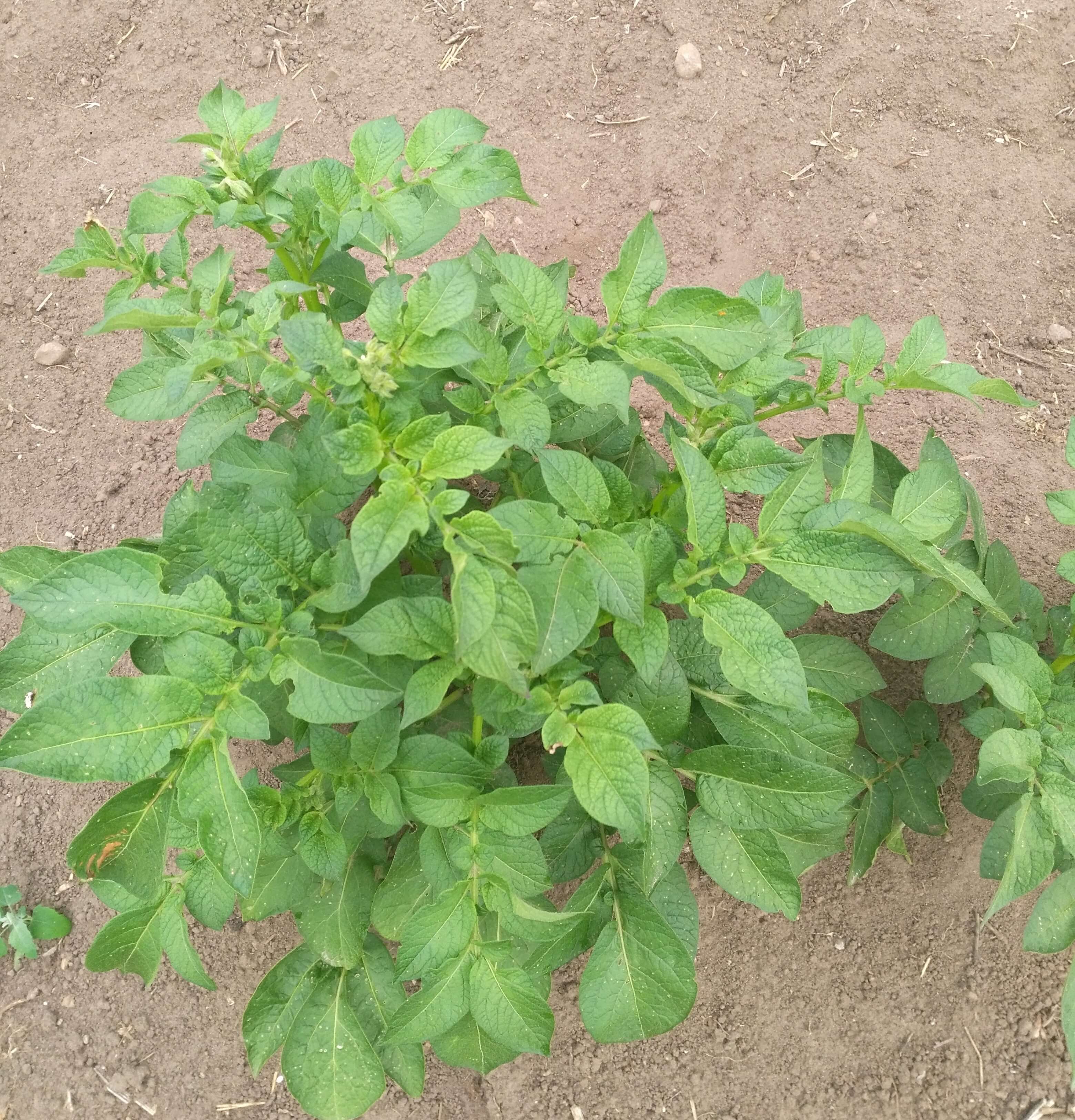 Potato plant just coming into flower Potato plant just coming into flowerGrowing seed potatoes can be an important contribution to your long-term survival food supply. Potatoes have some important characteristics as a survival food:
You can read more about those qualities in Planning a survival garden When To Plant Seed Potatoes
You can plant potatoes once the danger of hard frost is passed in the spring. You can check your last spring frost date here We usually do two plantings; one in early-mid May for fresh eating new potatoes and one around the end of June for storage.My later planting is about twice as large as the earlier one. I grow only red potatoes since I prefer their taste and texture. Good choices for the early planting include Red Norland and Chieftain; the later planting could be Red Pontiac or Ida Rose for storage. All of these have produced abundantly for me. If you decide to pre-sprout your potatoes, you'll want to put your seed potatoes out in a single layer in a cool lighted spot. This will encourage strong shoots. Do this about 2 weeks before you plan to plant. Note: I've planted both with and without pre-sprouting, and, as long as you use good seed potatoes with visible eyes, I can't say it makes a difference. One or two days before planting, cut each seed potato into sections, making sure each section has a couple good eyes. Lay the cut potato sections out in a tray in a single layer to dry a bit before planting. 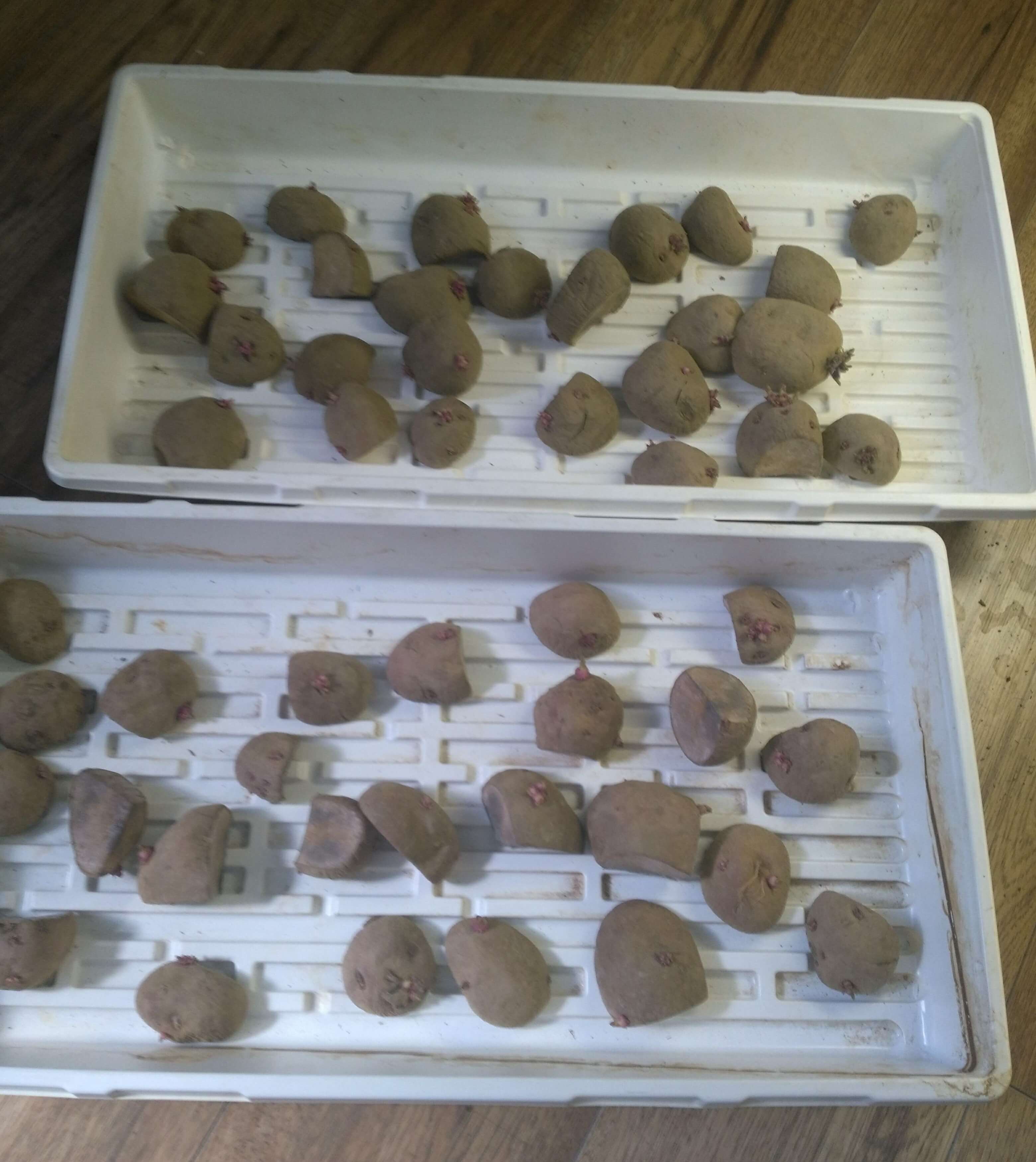 Cut sections of seed potatoes ready for planting Cut sections of seed potatoes ready for plantingPlanting Your Seed Potatoes
Plant your potatoes in a site with full sun, and deep soil. I till the ground thoroughly, then use the hiller-furrower attachment on my rear-tine tiller to shape the bed and make a furrow. I have tried surface planting potatoes using mulch hay to cover them deeply, but I found the yield was greatly reduced. I buy five pounds of seed potatoes for each variety I plant. This will usually fill a 50-foot row for each type. The second planting yields about 100 lbs. from each row, for storage. We don't eat that much ourselves, but we barter some with a neighbour that grows great winter squash, and we keep some back for re-planting. I space my furrows 5 feet apart to allow lots of room for hilling up the spuds. I can also quickly run the tiller down the rows to chew up the weeds, and loosen soil. 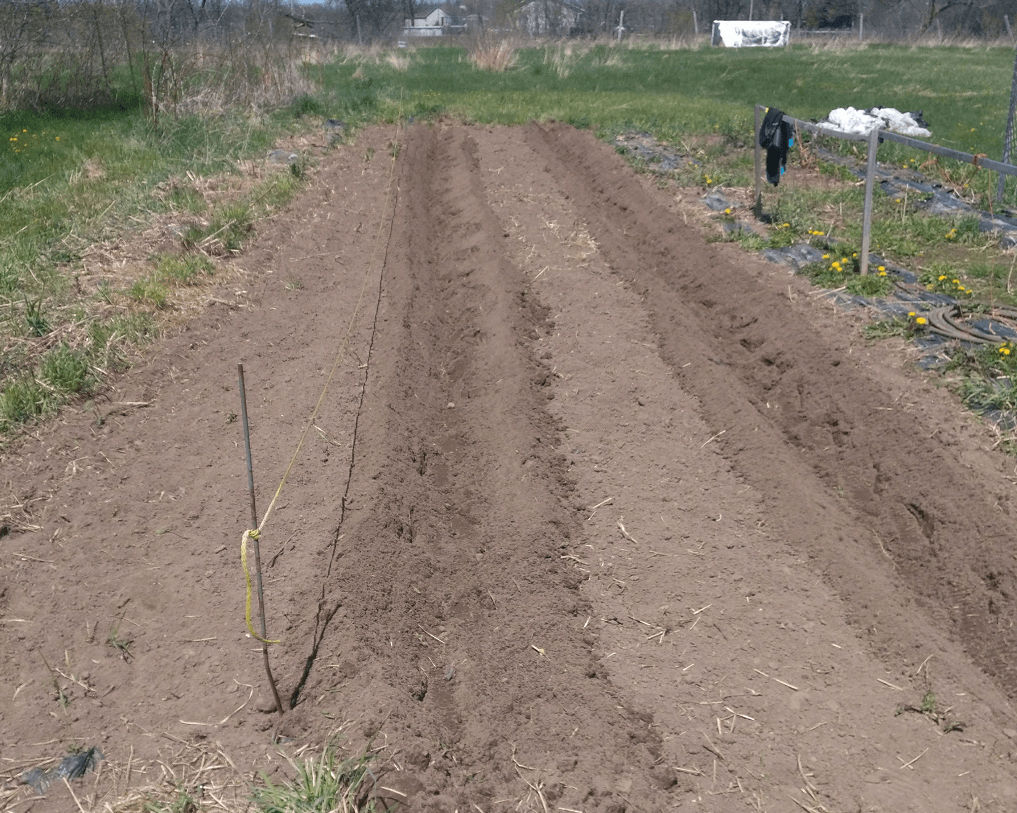 I add a layer of well-composted manure to the bottom of the trench and mix it in. I plant the seed potato pieces about 14 inches apart in the furrow; a garden rake makes a good measuring device. This is further apart than many books suggest, but my experience suggests I get larger spuds at this spacing. Cover the potatoes with a couple inches of soil. In the spring, the ground usually has enough moisture to promote growth. Plantings later in the season, or in very dry soil, should be watered in. 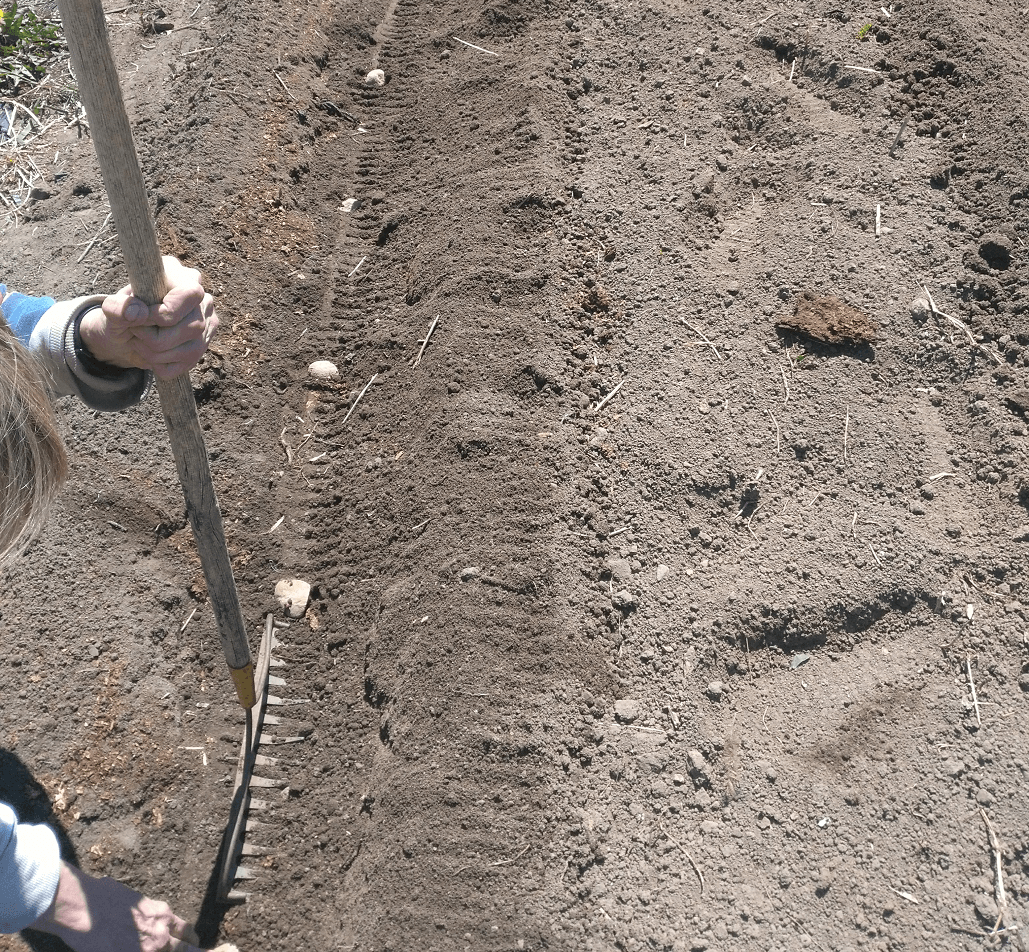 Suzie doing all the work as usual ;-) Suzie doing all the work as usual ;-)How To Care For Your Potato Planting
Once your potatoes are well up, hill them using a garden hoe. I usually run the tiller close to the plants first to loosen the soil and kill weeds. Bury the plants right to the top leaves. Potatoes grow off the stalk, so more hilling equals more potatoes. We will run the sprinkler once a week if we don't receive any rain. You can control potato beetles by hand picking (catch the bugs, drown them in soapy water, and squash any eggs or larvae you see on the leaves) or by using floating row cover. We have found that our second planting rarely suffers from potato beetles; I suspect we stumbled on a way to beat them based on their life cycle. 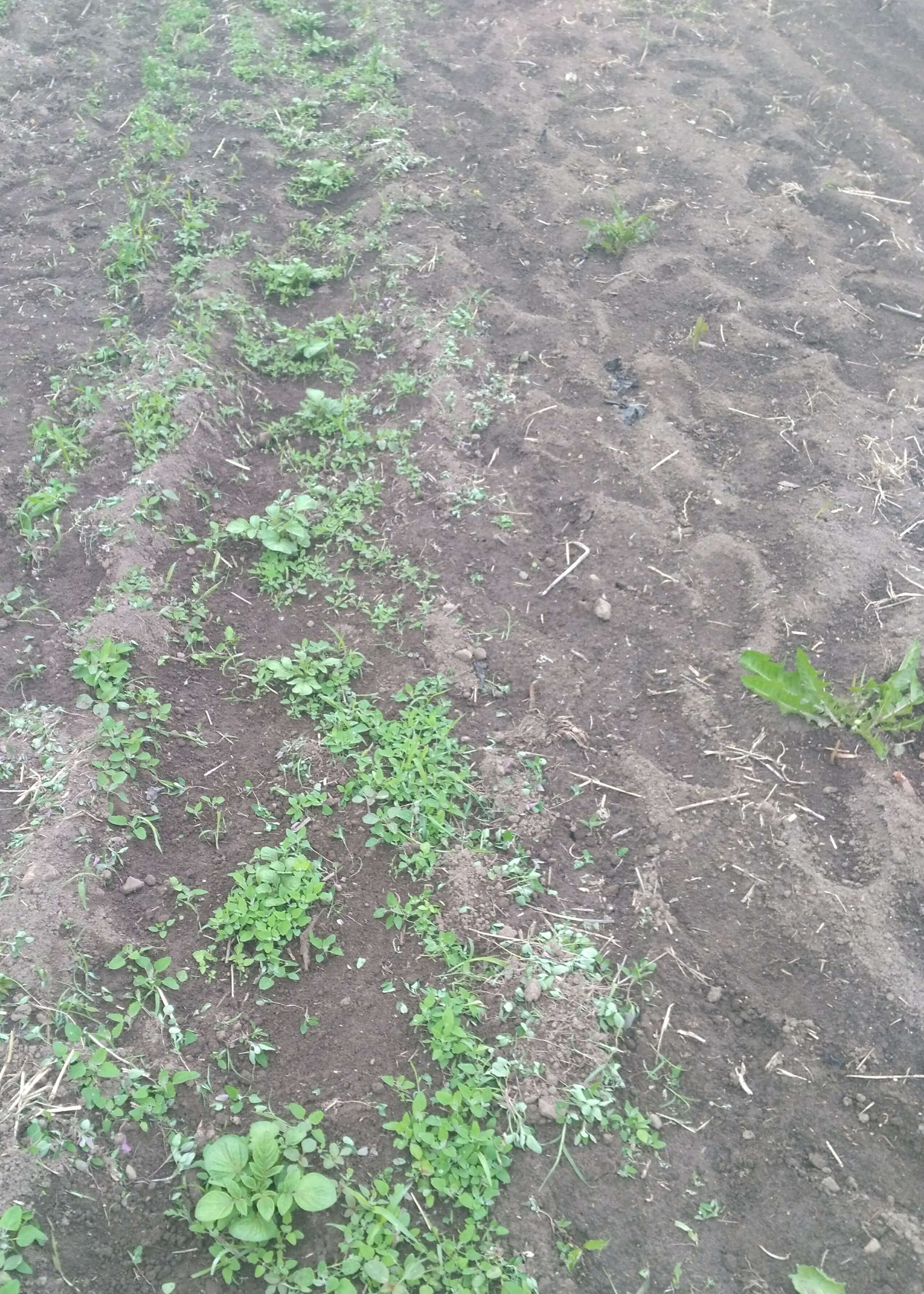 Spuds ready for first hilling Spuds ready for first hilling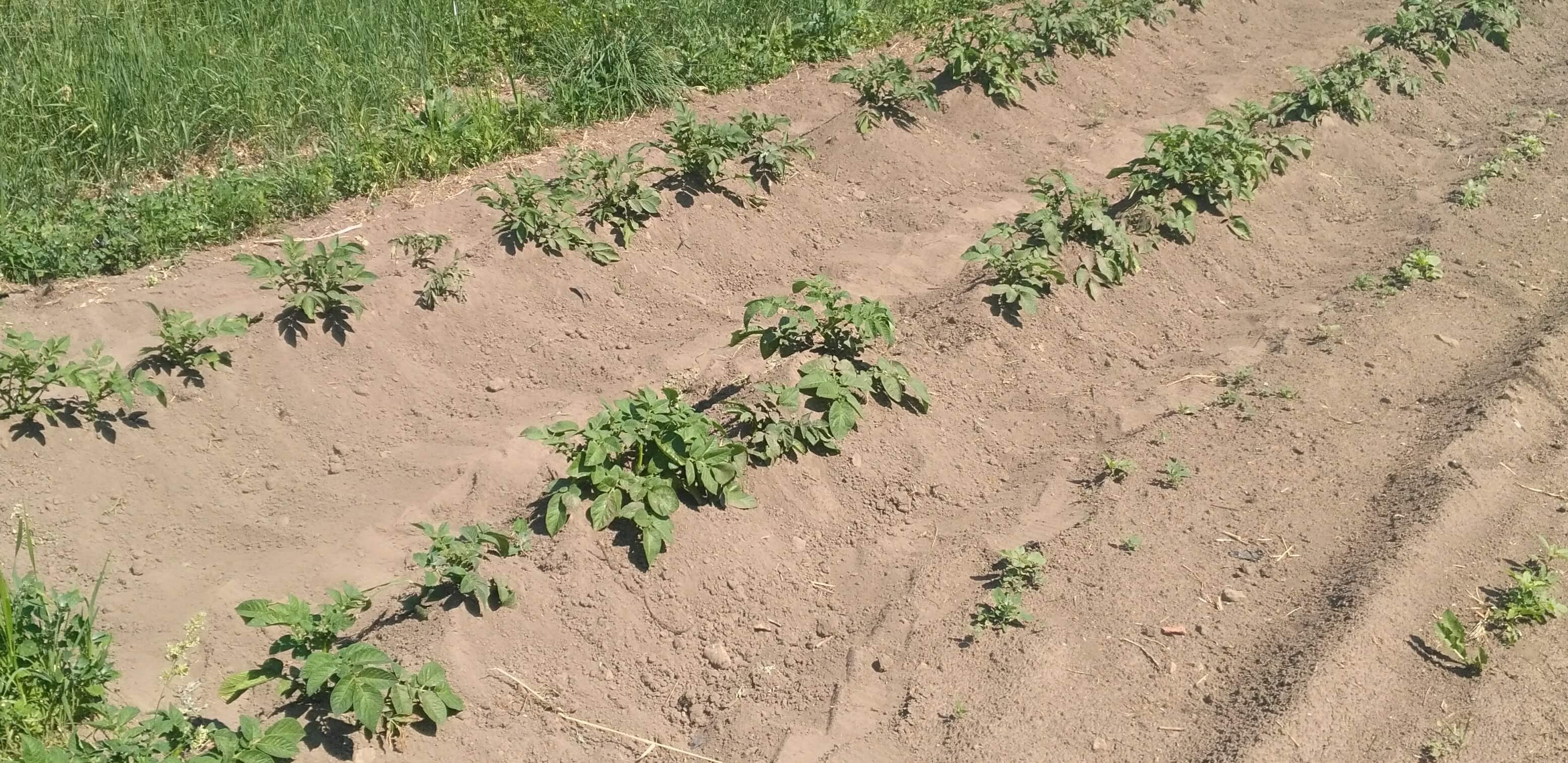 After a couple hillings After a couple hillingsHow To Harvest And Store Your Potatoes
You can dig new potatoes once the plants have finished flowering. New potatoes are for fresh eating, they won't store well. Dig your main crop once the plants have started to die back in the fall. Dig in dry weather, using a garden fork to lift the soil carefully without spearing the spuds. To store your spuds long-term, brush off excess dirt carefully; don't wash them. Store only the undamaged potatoes. You want to cure them for a couple weeks at about 50F (10C). Lay your potatoes out in a single layer, in a dark location. A cool basement would work if you can exclude light. After a couple weeks you can move then to their permanent storage. I have a heavily-insulated cold room in an outbuilding to store my potatoes, garlic, onions, and carrots. I can do curing and long-term storage in the same location because I can control the light, temperature and humidity Once the spuds are cured, I maintain the temperature between 36-40F (2-4C), and I keep a pan of water in the room in front of the heater to help keep humidity high. 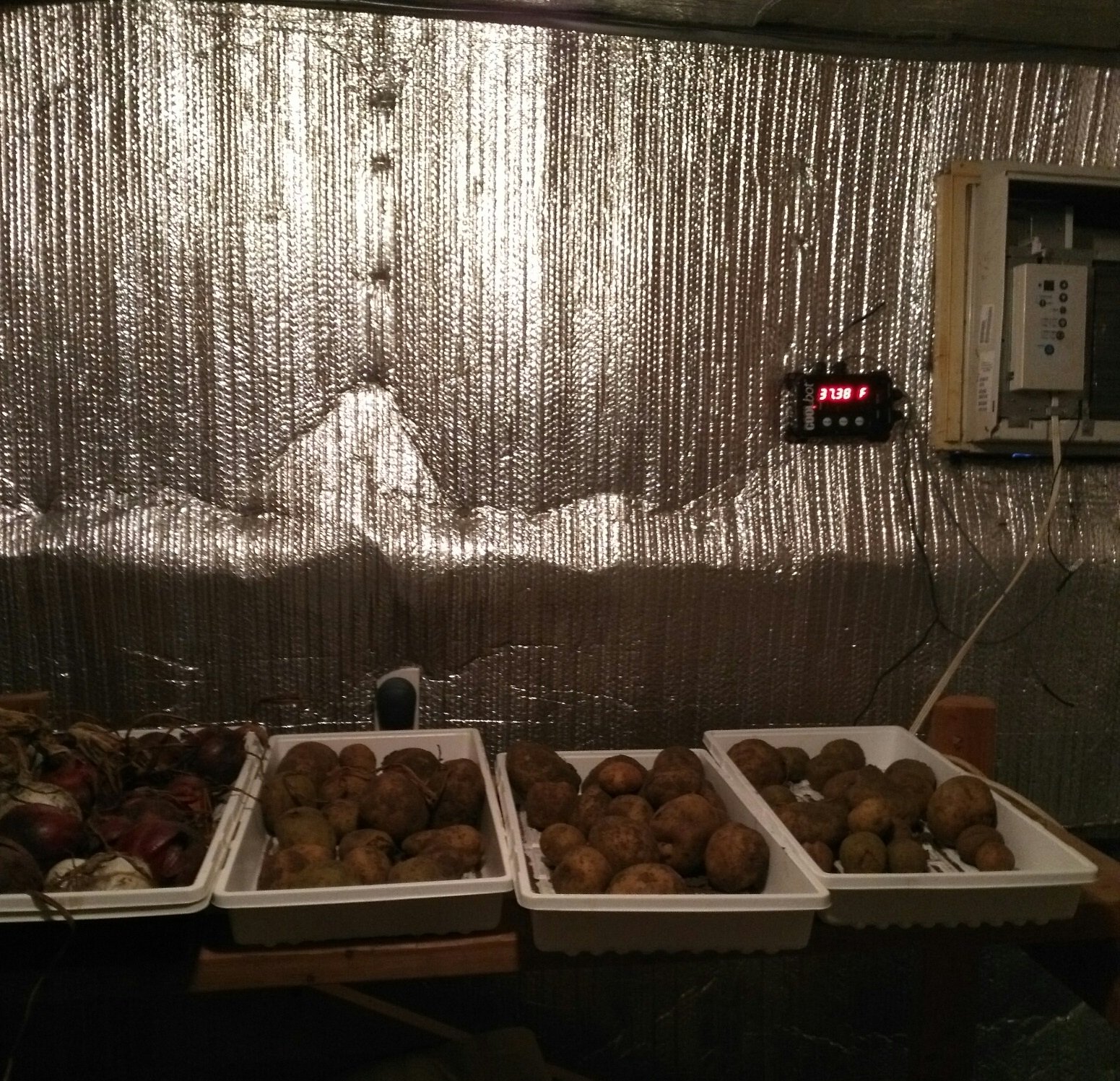 My cold room has an A/C for the fall and a heater for the winter to prevent freezing My cold room has an A/C for the fall and a heater for the winter to prevent freezingI have lots of space, so I store my potatoes in trays in a single layer. This makes it easy to check for spoiled spuds. You can store them in bins, but check regularly for any that are sprouting or beginning to spoil. Free Market Garden Startup Guide The consumer demand for fresh local organic food has never been higher. Bad news on the supply chain is good news for local growers. Get my free Organic Market Gardener Start-up Guide and see if this is the right time to launch your CSA market garden business. Resources for the Small Grower and HomesteaderChapter 9 - 7 Cash Cow Crops: The Self-Sufficient Backyard Raise chickens, pigs and a productive organic garden: The Homesteader Book Bundle Fresh egg for breakfast (and maybe barter): The Eggs Factory If you need to build it on your homestead, the plans are here: 16,000 Woodworking Plans
|
See Something You Like? Share!
Recent Articles
-
Farm grown reviews of products recommended by New Terra Farm
Dec 04, 25 06:26 AM
Find great farm and garden products in my farm grown reviews -
Best Chicken Coop and Accessories for Small Farms and Homesteads
Nov 30, 25 09:18 AM
Looking for the best chicken coop? Here are the top coops, accessories, nest boxes, and gear to build a safe, productive poultry setup. -
Community Supported Agriculture Marketing Ideas To Sell Out The Season
Nov 05, 25 05:18 AM
Authentic Community Supported Agriculture marketing ideas to grow loyalty, boost sign-ups, and sell out your CSA every year



